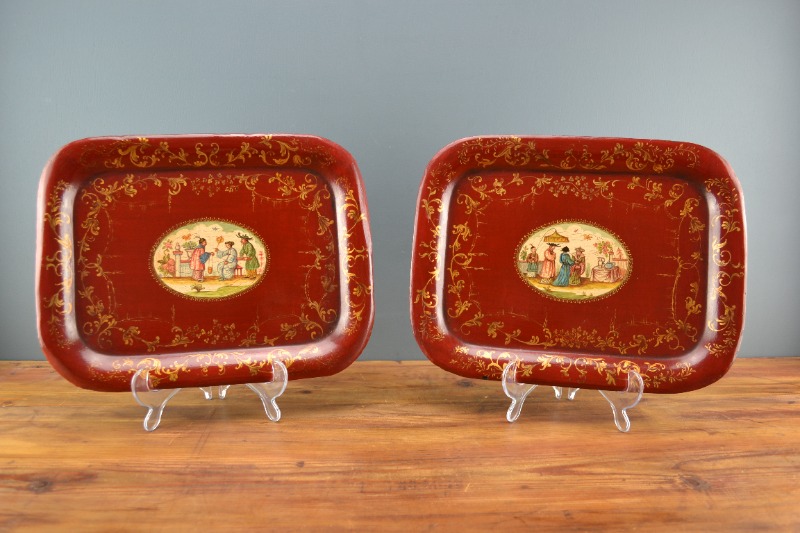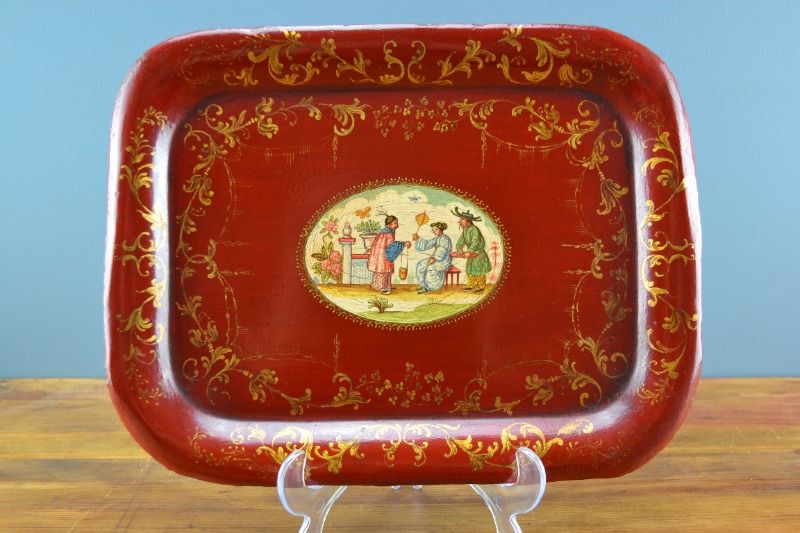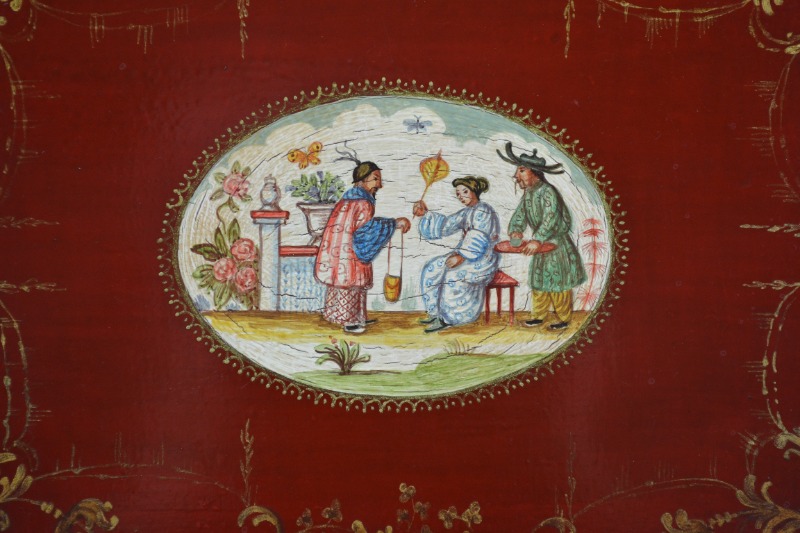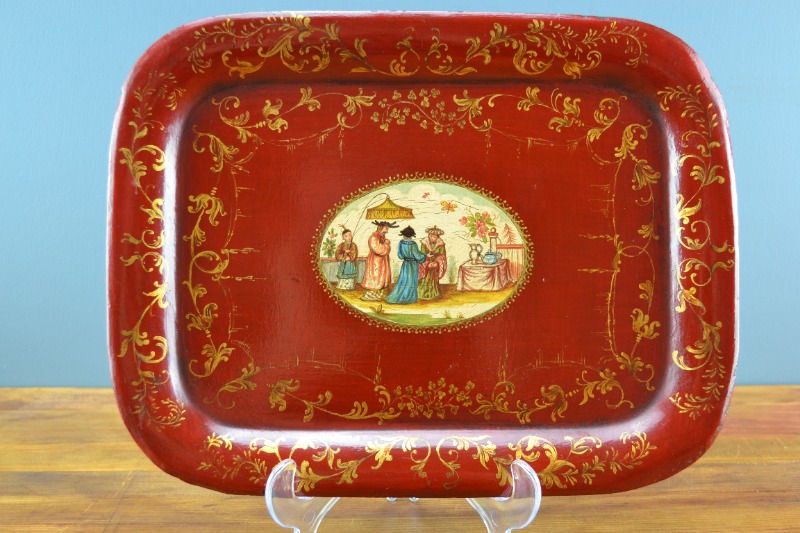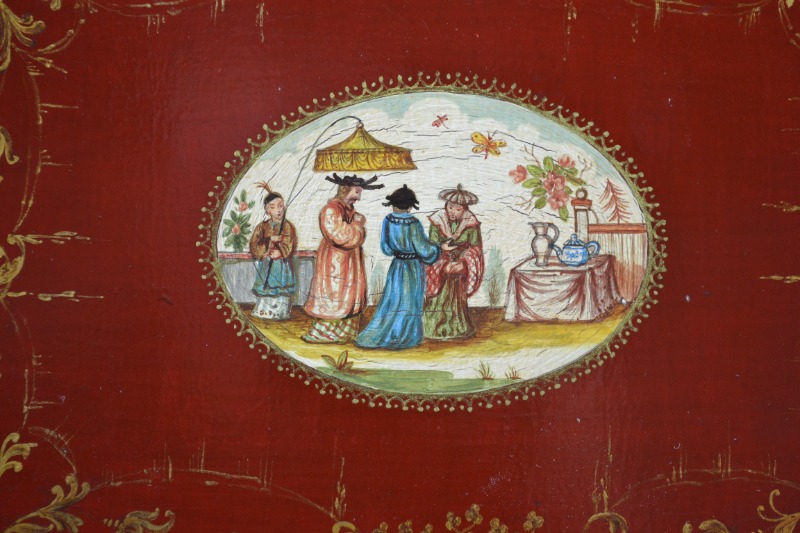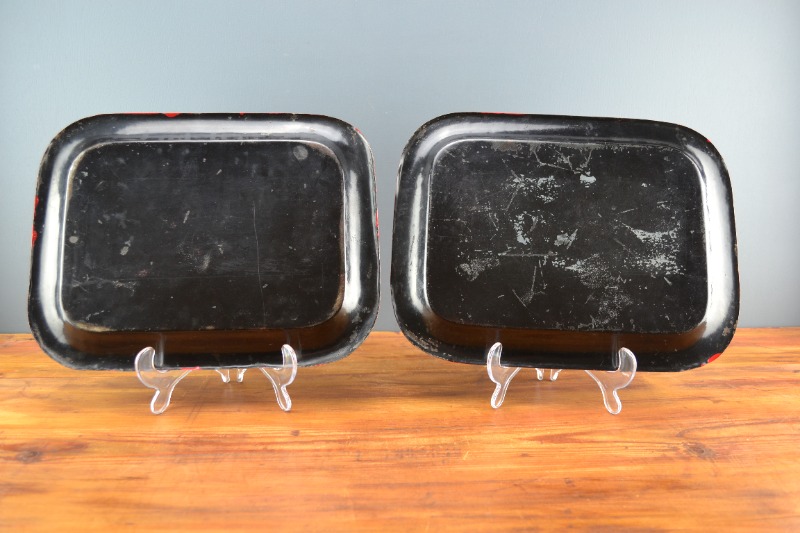Pair of Hand Painted Tôleware trays with Chinoiserie Vignettes, 19th century
Age:
19th Century
Material:
Toleware
Dimensions:
each Tray: 31cm x 24cm
Shipping:
Standard Parcel
Price:
SOLD
An unusual pair of small tôleware or tinware trays, japanned in red with gilt floral flourishes around a central vignette showing Chinese inspired scenes. The first shows a lady seated in her garden with a fan, greeting a visitor and being served a cup of tea. The second shows three gentlemen outside with a servant holding a parasol and a table prepared with a teapot.
The trays are in very good condition with minor losses to the enamel on the edges and to the rear where the black enamel is a single layer.
Tôleware is painted and varnish-coated tin ware, made in imitation of the imported Chinese lacquer wares that were popular in 18th century Britain. The term ‘japanning’ came from A Treatise of Japaning and Varnishing by John Stalker and George Parker in 1688. In it, they explained that Japan ‘not being able to furnish these parts with work of this kind, the English and Frenchmen have endeavoured to imitate them…if done by able hands, it may come so near the true Japan, in fineness of Black, and neatness of Draught, that no one but an Artist should be able to distinguish ’em.’ However, it was not until Major John Hanbury’s (1664-1734) Pontypool ironworks in South Wales that a hard wearing japan varnish was devised to protect the tinware against rust. Its ingredients were asphaltum and linseed oil, which when heated with other ingredients produced a tar-like varnish. It had to be slowly baked in a stove to dry out and it was this ‘stoving’ that gave the japanned ware its characteristic lustre and surface suitable for decorating.

